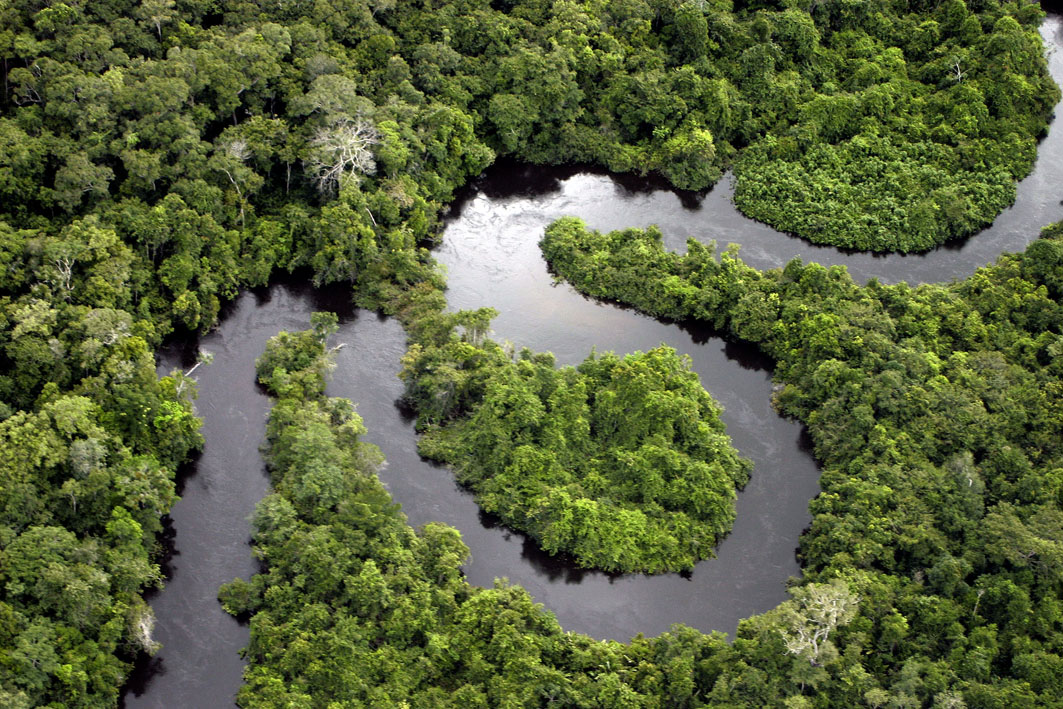Written by: Victoria Masterson
The bioeconomy is becoming big business in Colombia.
By protecting and restoring the Amazon rainforest – and cultivating some of its 80,000 plant species – communities are replacing work that once relied on deforestation.
Here, we detail three businesses in Colombia that are helping communities develop sources of income that also help the rainforest. All three are part of the World Economic Forum’s Trillion Trees: Amazon Bioeconomy Challenge, a call for innovative projects which protect and restore biodiversity in the Amazon rainforest, while simultaneously creating viable work for the community.
A school for the Amazon rainforest
In the Amazon rainforest region of Caquetá in southern Colombia, cattle ranching and illegal mining lead on average to the felling of 35 thousand hectares of forest a year. Amazonía Emprende, a forest school, is helping to combat this by teaching local communities to develop sustainable businesses using nature-based solutions.
Working with local women and young entrepreneurs, the company has developed five nature-based solutions. These include a sanctuary for native bees and a “mega-nursery” of native forest species. Amazonía Emprende has also helped local people produce native aromatic plants and develop a restaurant where guests can sustainably enjoy native products.
The company hopes to restore and conserve up to 100,000 hectares of forest by 2030.
Forest ecotourism
The Colombian Eastern Amazon covers an area of almost 20 million hectares. More than 70 percent of the population is indigenous, and more than 80 percent of the area’s culture and biodiversity is protected. But increasing deforestation and contamination of water basins is a problem, says the Alisos Foundation.
It hopes to address this by working with indigenous communities to develop nature tourism in Mitú in Vaupés, an area of southeastern Colombia in the Amazonian jungle.
“This initiative seeks to protect the Amazon ecosystem while improving the living conditions of its inhabitants,” the foundation says. Approaches will include strengthening the “organizational, legal and financial” capabilities of the indigenous communities to manage their own nature tourism companies.
Sustainable forest products
For farmers in Colombia’s Amazon rainforest basin, growing illicit crops like coca and creating pastures to feed cattle are often seen as the only way of earning an income. But this is contributing to deforestation.
In the Florencia municipality of Caquetá in southern Colombia, social enterprise Agrosolidaría is helping farming families earn a living from sustainably cultivated plants in the Amazon rainforest.
The business is working with more than 250 farming families who were victims of armed conflict in Colombia and produced coca as their only means of making a living.
Through its processing plant, Agrosolidaría is now making products including extra virgin olive oil and snacks made from sacha inchi, a plant that produces seeds rich in omega-3, protein and vitamin E. Sweet sauce made from Amazonian pineapple, chilli powder made from charapita, a type of pepper from Peru, chestnut oil and cosmetic products are some of its other products.
What is the bioeconomy?
The bioeconomy involves sustainably developing products from nature in a way that creates income and jobs, while also restoring and conserving ecosystems.
This includes sustainably producing renewable resources from land, fisheries and aquaculture, the European Commission says. These resources might be converted into food or bio-based products, like bio-energy.
The World Economic Forum says the Amazon rainforest has the potential to become the world’s biggest bioeconomy.
The Trillion Trees: Amazon Bioeconomy Challenge is hosted on Uplink, a digital platform launched by the Forum and its partners to crowdsource innovative solutions to the world’s biggest problems.
The vision is to accelerate the delivery of the United Nations’ 17 Sustainable Development Goals, which include ending poverty, inequality, hunger and combatting climate change.
Header Image Credit: Wikimedia Commons/(CC BY-SA 4.0)
Republished with permission from World Economic Forum







